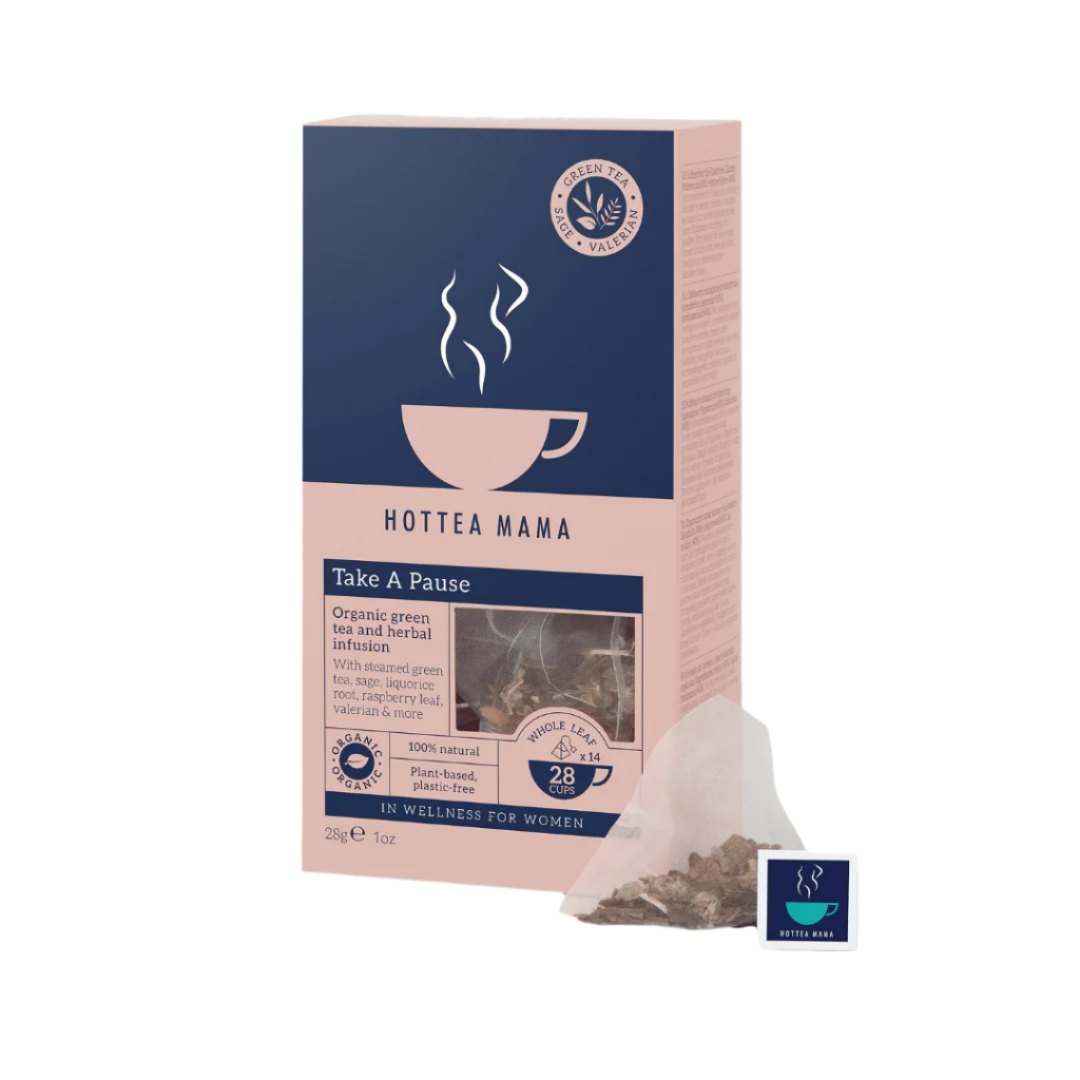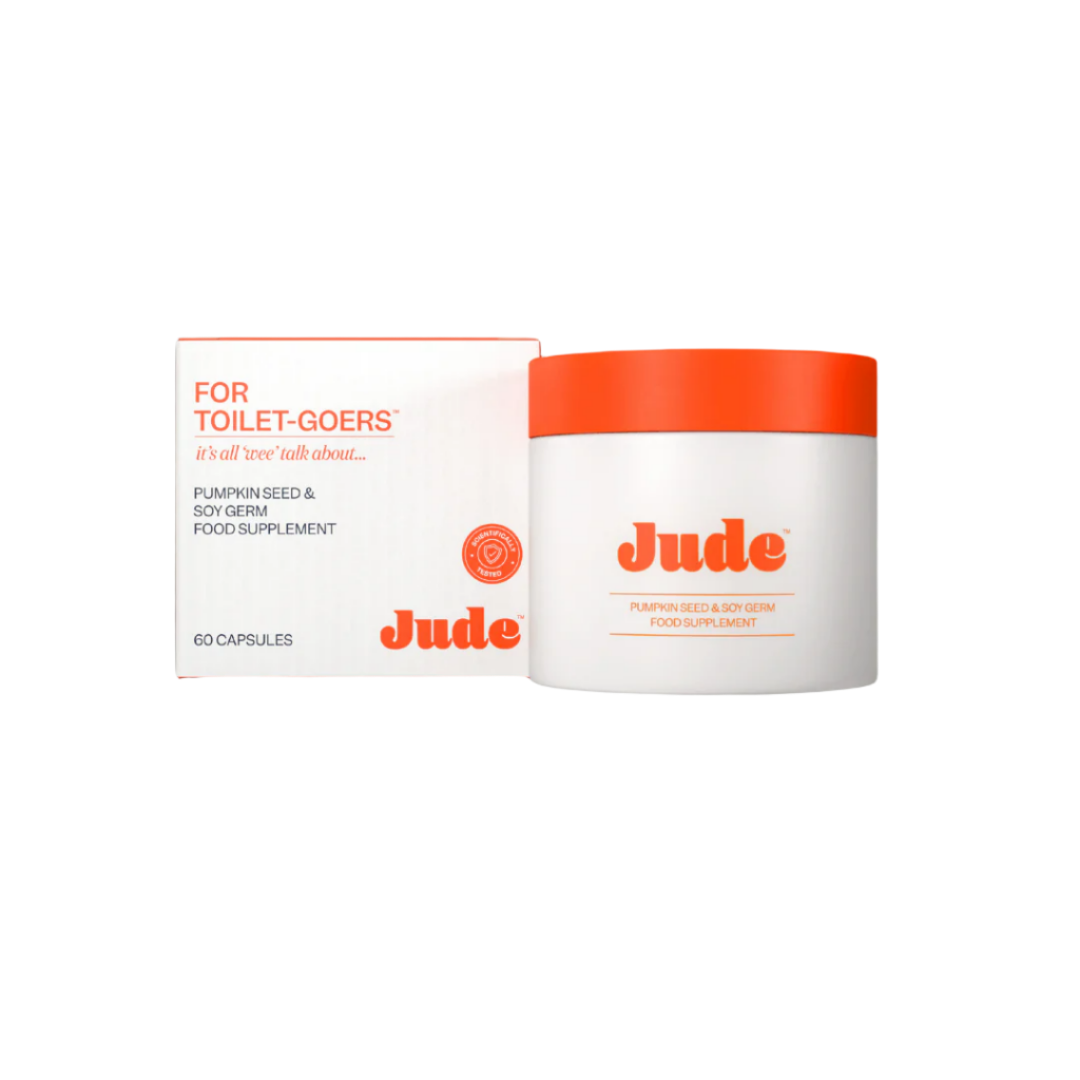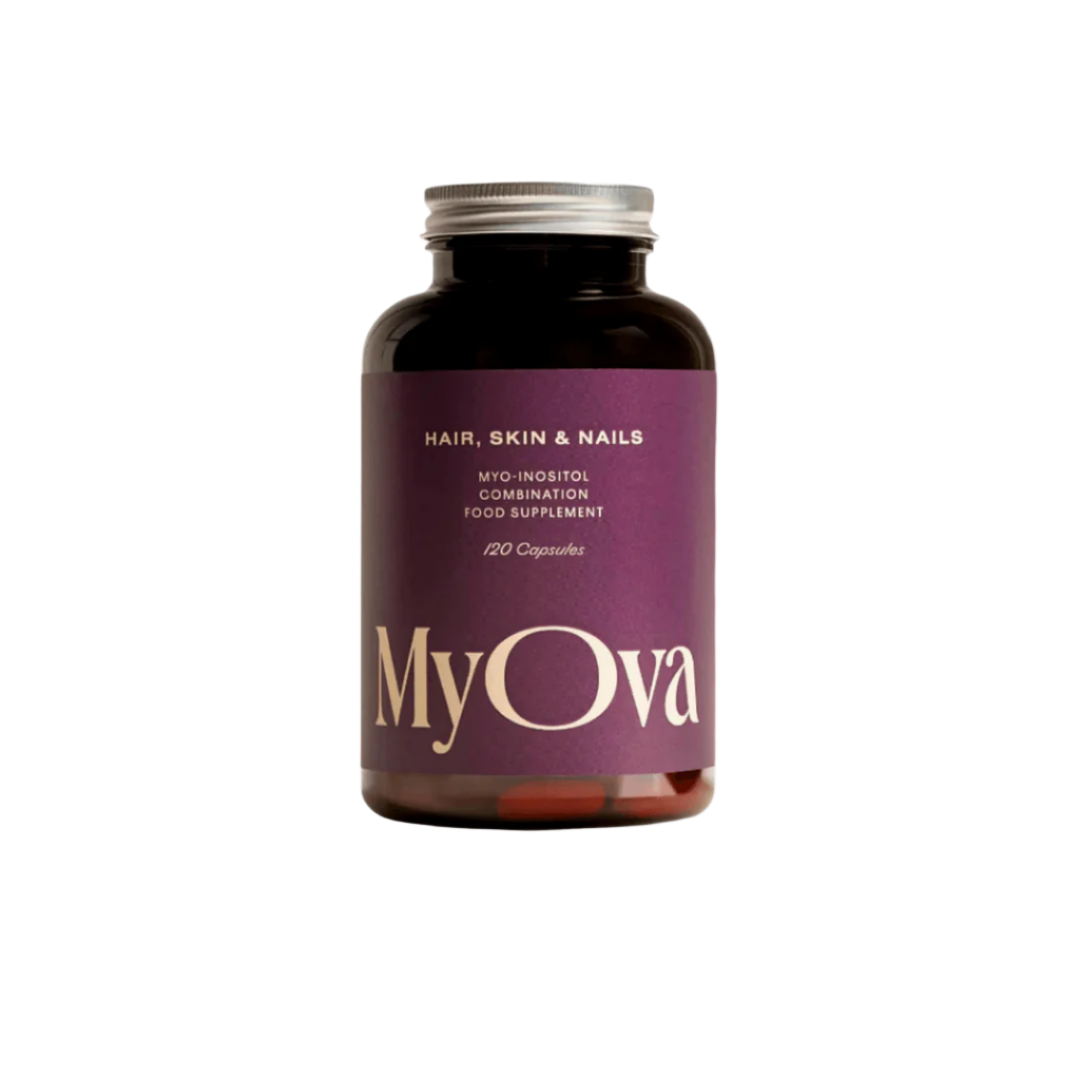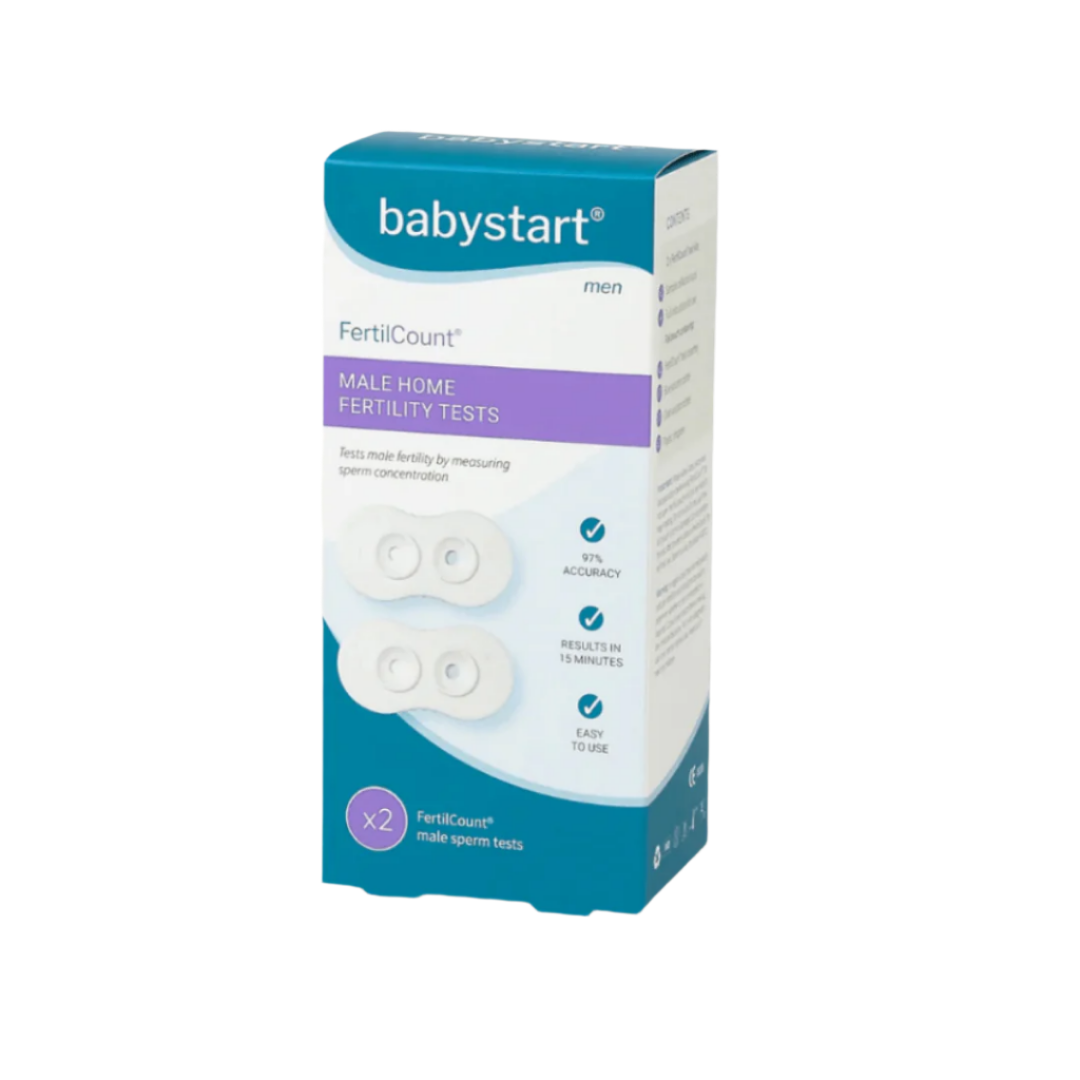Tempdrop - BBT tracking while you sleep
Tempdrop - BBT tracking while you sleep
Track fertility effortlessly with the Tempdrop wearable ovulation tracker. Ovulation tracking has never been so easy.
Tempdrop brings the full fertility tracking solution to your smartphone. Whether you are looking to increase your chances of conceiving, or are practicing fertility awareness methods, the Tempdrop fertility tracker device is tailored to you.
Why Tempdrop?
- Non-invasive
- Stress-free temperature tracking without losing sleep
- All-in-one fertility charting app
- Get real-time fertile window insights
- Smart technology
- Delivering accurate data
- Suits irregular cycles
Sizing:
S/M fits 8.5"-15.5"/21.5cm - 39cm
L/XL fits 12.5"-18.5" /31.5cm- 47cm.
Please measure your arm before ordering your Temprdrop fertility tracker.
Please note: Orders shipped to Ireland femme will pay the customs charges.
Get 2 months of Tempdrop Premium for free! After that, it’s just £6.00/month.
Please note, once a Tempdrop device has been opened, it can’t be returned.
147 in stock
Couldn't load pickup availability
Description
Description
Tempdrop makes BBT tracking effortless. Worn overnight, it tracks your basal body temperature while you sleep, giving you accurate, personalised insights into ovulation, fertility, and your cycle - without the stress of early-morning thermometer checks.
Easy all-in-one BBT tracking solution – Tempdrop's wearable sensor and accompanying charting app brings the full fertility charting solution to your smartphone.
Accurate & consistent – eliminates errors from restless nights or late wake-ups
Personalised insights – adapts to your unique sleep & cycle patterns
Easy to use – wear the Tempdrop sensor on your upper arm during sleep and sync to the Tempdrop charting app whenever it's convenient.
Supports PCOS & irregular cycles – reliable even when cycles are unpredictable
Backed by science - Tempdrop uses the latest scientific knowledge to bring you an accurate method of cycle tracking and identification of your fertile window.
Sleep in, no problem - Tempdrop's sensor continuously monitors your basal body temperature while you sleep, eliminating the need to wake up at the same time each day.
How to use
How to use
1️⃣ Wear Tempdrop overnight on your upper arm.
2️⃣ Sync to the app in the morning.
3️⃣ See your temperature data + clear cycle insights.
Share this product
How It Works
Fertility & ovulation tracker kit
Introducing Tempdrop - a wearable fertility tracker. Tempdrop sensor & fertility app: A lifelong companion.
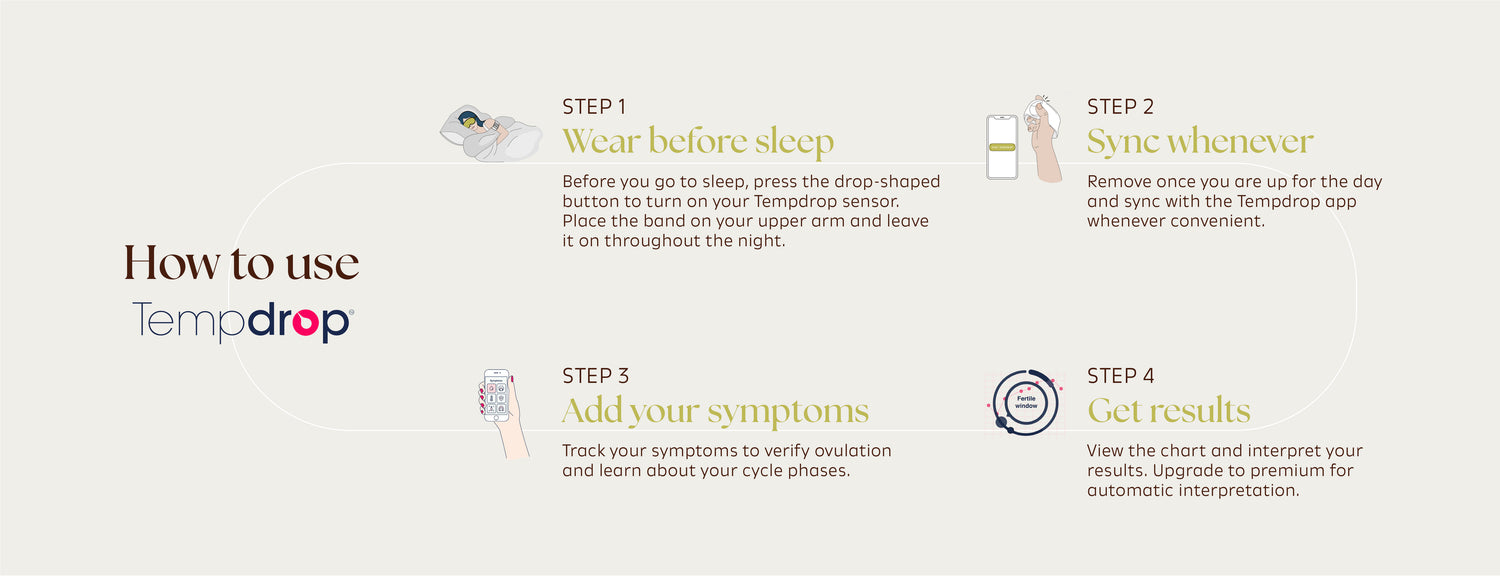
FAQs
What is Tempdrop?
What is Tempdrop?
Tempdrop is a smart wearable thermometer and charting app combo that brings an all-in-one fertility monitor to your smartphone.
The Tempdrop sensor is worn on the upper arm during sleep to accurately derive a core nightly sleeping body temperature for the purposes of ovulation tracking. Tempdrop is uniquely able to arrive at an accurate body temperature thanks to a combination of advanced sensors and sophisticated algorithms. Combine temperatures with other fertility symptom tracking within the app to pinpoint ovulation each cycle. Our charting app has a free version option or you can choose to upgrade to our premium features to take advantage of automatic cycle interpretation and fertility insights. As a bonus, our premium option allows you to track your sleep data as well.
If you’re, trying to conceive, charting to know your body, or practicing fertility awareness long-term, the Tempdrop fertility monitor is designed to take the stress out of ovulation tracking. For those that are postpartum, have irregular cycles, work shifts, are a light sleeper, or love to sleep-in, Tempdrop delivers accurate cycle tracking data that is tailored to you.
How does Tempdrop work?
How does Tempdrop work?
Tempdrop is a smart wearable thermometer and charting app for fertility tracking.
The Tempdrop sensor is worn under your upper arm using the Tempdrop armband during sleep. Each night, it collects thousands of data points on your body temperature and sleep motion. We derive your single nightly sleeping temperature from the data using advanced algorithms.
After removing the device, initiate a sync using the Tempdrop sensor and fertility app ( Apple Store, Google Play) and Tempdrop will sync your sleeping temperature using Bluetooth Low-Energy (BLE) to your smartphone. You can track additional fertility symptoms in the charting feature for a complete solution.
The Tempdrop wearable fertility tracker will replace the traditional method of BBT temping so you can stop losing sleep and take the stress out of cycle charting. Click here to learn more.
Will I have to pay an ongoing subscription?
Will I have to pay an ongoing subscription?
Tempdrop is unique because it's a wearable fertility monitor that gives you freedom and options to suit your specific needs.
The Tempdrop fertility app has both free and premium versions.
Free version
- Sync your sensor to receive temp results
- List of temperatures
- Chart view
- Multiple symptom tracking
- Manual chart interpretation (set a cover line, temperature shift count, and peak day)
- Data backup with robust data protection
- Cycle history and status
- Chart export and share
Premium Version
- Sync your sensor to receive temp results
- List of temperatures
- Multiple symptom tracking
- Manual chart interpretation (set a cover line, temperature shift count, and peak day)
- Data backup with robust data protection
- Cycle history and status
- Chart export and share
- Sleep data
- Fertility insights
- Automatic interpretation of temps and cervical mucus
- Interactive fertility course
- Calendar feature
How is Tempdrop different from other basal thermometers?
How is Tempdrop different from other basal thermometers?
As opposed to taking a manual waking temp, Tempdrop offers continuous monitoring, filtering out waking times to give you a true nightly sleeping temperature. The smart algorithm learns your unique nightly and monthly patterns to filter variables that can otherwise skew temp results. Worn high up in the inside of the upper arm, the wearable fertility monitor captures an axillary reading making it more accurate than surface skin temperature.
The accompanying charting fertility app encourages tracking multiple fertility signs to better guide you in understanding your cycle and fertile window. If you already have a favourite fertility app, you can freely use it with your Tempdrop data. The choice is yours!
Can I start temping whilst I am using other birth control methods?
Can I start temping whilst I am using other birth control methods?
Yes. You can start using the Tempdrop ovulation tracker device straight away, even if you are using another form of birth control, such as hormonal birth control.
Tempdrop is not dependant on your cycle status. However, the sooner you start wearing Tempdrop, the sooner it can get through the 'learning phase' (Tempdrop learns your sleep and environmental patterns). This will enable you to catch your first ovulation post hormonal birth control (HBC) or postpartum (PP), whatever your personal circumstances are.
Does it matter what time I wake up or how long I sleep?
Does it matter what time I wake up or how long I sleep?
We are happy to inform you that your days of alarm-clock wake-ups to take your temperature are over. With the Tempdrop wearable fertility monitor, your temperature is monitored continuously throughout the night. This means that whenever you wake up, your sleeping temperature will be waiting to sync to your futility app.
The same applies if you experience disturbed sleep or a shift worker. You will still be able to retrieve a result to chart your cycles. Here are the headlines...
- Tempdrop must be turned on and worn for a minimum of three hours
- Two hours of sleep must be detected for a valid result. Sleep time does not have to be consecutive
As best practice, turn on and wear you Tempdrop fertility tracker just before going to sleep and remove it as soon as you are up for the day. If your sleep is disturbed for a period of time during the night, leave the sensor on.
Is Tempdrop safe?
Is Tempdrop safe?
Perfectly safe!
The Tempdrop fertiloty monitor only transmits a Bluetooth signal in the first 30 seconds when being turned on and when you remove the device from your body and manually initiate syncing. It uses Bluetooth 4.0 to transmit data, which is a very low energy signal (approximately 1000x less than a cell phone). Syncing is less than 30 seconds per day.
The Tempdrop fertility tracker is powered by a standard coin cell type watch battery while it is being worn and recording. No wireless signal or connections are transmitted during sleep.
Finally, The Tempdrop wearable fertility tracker is made from medical grade materials and has FCC and CE certifications. The metal sensor is medical grade stainless steel which can contain trace amounts of Nickle.
Which smartphones can I use with Tempdrop?
Which smartphones can I use with Tempdrop?
Tempdrop is compatible with a wide range of smartphones. Simply visit your app store and search for the Tempdrop app. If you can download it, you're good to go!
I'm trying to get pregnant. How can Tempdrop help me?
I'm trying to get pregnant. How can Tempdrop help me?
On average, properly timed sexual intercourse can triple the likelihood conceiving naturally. By tracking your ovulation, you can identify the days with the highest probabilities of success. The Tempdrop wearable fertility monitor allows you to do just that by allowing you to consistently track accurate body temperature and other fertility symptoms in a stress-free way.
I have irregular cycles - Will Tempdrop work for me?
I have irregular cycles - Will Tempdrop work for me?
Yes! Tempdrop is designed to support all cycle types, including irregular ones.
Tracking fertility can be challenging for those with irregular cycles, but Tempdrop offers a flexible solution that adapts to your unique patterns.
The Tempdrop sensor continuously tracks your basal body temperature (BBT) while you sleep, providing real-time data to help identify ovulation. This is especially helpful for those with irregular cycles, as it takes the stress out of collecting your daily temperature results when cycles are long.
If your cycles are considered irregular, the Tempdrop app won’t estimate your next ovulation, but it still tracks and interprets* your temperature data to confirm when ovulation has taken place. Once ovulation has passed, the app can estimate your next period due date, providing valuable insights for cycle tracking, timing pregnancy tests, or understanding your body's natural rhythms. If pregnancy occurs, the confirmed ovulation date can also be used to calculate an estimated due date with greater accuracy.
Users with irregular cycles are also encouraged to track and log Cervical Mucus observations, as this fertility marker can be used to identify when an ovulation attempt is near. When Cervical Mucus is logged, the app can give additional fertility window insights.
Tracking Fertility with Irregular Cycles
While future ovulation estimates can’t be given when cycles are irregular, Tempdrop can help by:
* Monitoring your temperature patterns over time to recognise ovulatory trends.
* Combining other fertility signs, like cervical mucus tracking, to identify when fertility is high.
* Predict when the next period is due after ovulation is confirmed.
* Identifying the right time to test for pregnancy.
* Assist in accurately predicting a due date based on ovulation timing.
Final Thoughts
Having irregular cycles doesn’t mean you can’t use Tempdrop - it simply means that instead of relying on predictions, you’ll focus more on real-time data interpretation. The Tempdrop fertility monitor remains a powerful tool to help you understand your cycle and fertility health, even when patterns aren’t predictable.
Can I start temping whilst I am using other birth control methods?
Can I start temping whilst I am using other birth control methods?
Yes. You can start using Tempdrop straight away, even if you are using another form of birth control, such as hormonal birth control.
The Tempdrop ovulation tracker is not dependant on your cycle status. However, the sooner you start wearing Tempdrop, the sooner it can get through the 'learning phase' (Tempdrop learns your sleep and environmental patterns). This will enable you to catch your first ovulation post hormonal birth control or postpartum, whatever your personal circumstances are.
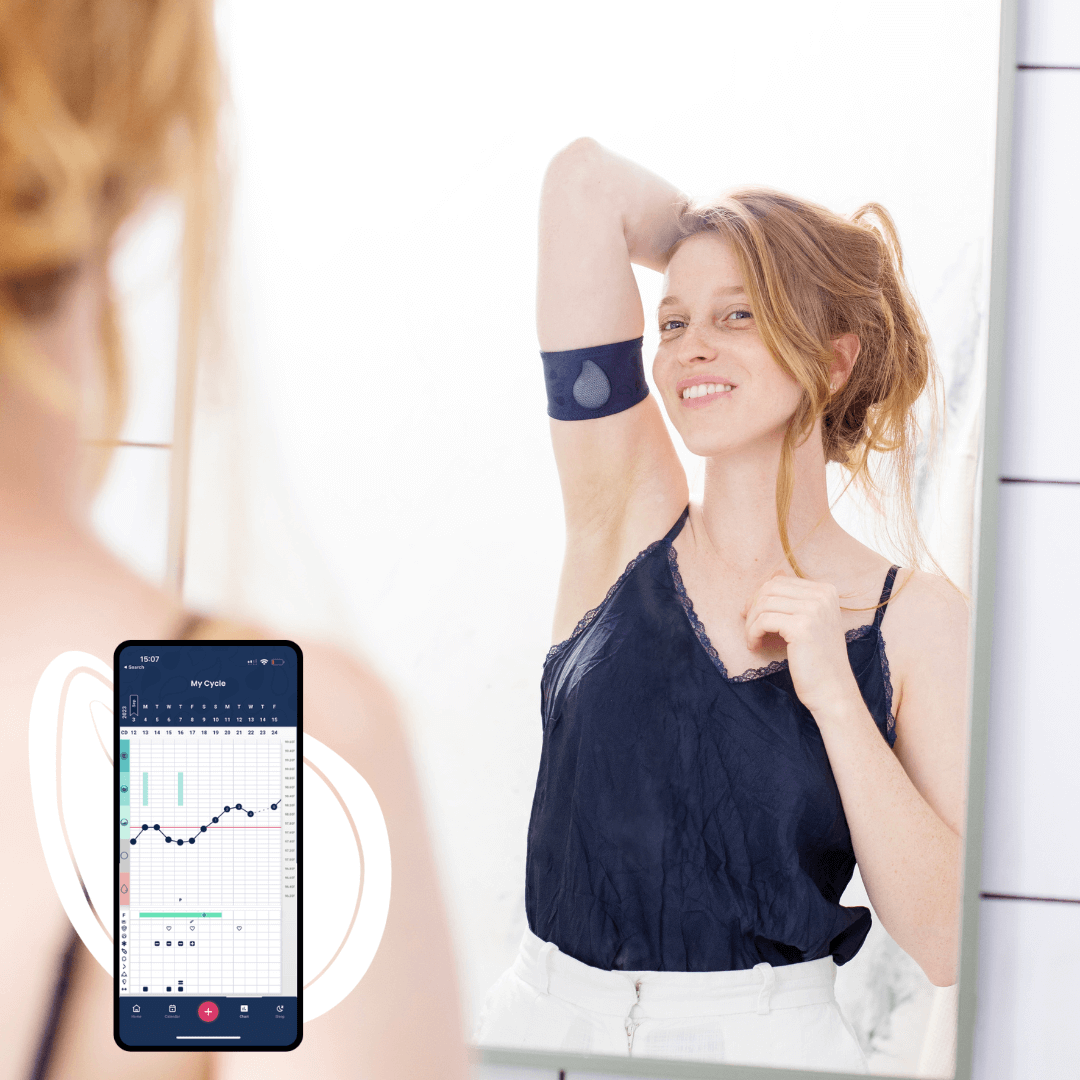
Tempdrop Fertility App
Tempdrop brings the full fertility tracking solution to your smartphone. Whether you are looking to increase your chances of conceiving or are practicing fertility awareness methods, Tempdrop is tailored to you.
The Tempdrop fertility app is available in both a free and a premium version with enhanced features for an additional cost.
Tempdrop Premium
Tempdrop Premium is crafted to provide deeper insights into your fertility and overall health.
What benefits come with a premium subscription?
- Ovulation and fertility insights - Get personal cycle interpretation, fertility insights, and ovulation confirmation
- Track your sleep quality - See your nightly sleep patterns, including deep and light sleep stages, and receive overall sleep score.
- Tempdrop Academy's - Fertility awareness education programme. Learn the stages of your menstrual cycle and the benefits of tracking your cycles.
- Calendar view - Use the calendar view to see cycle forecasts and insights 6 months in advance.
When you purchase Tempdrop you get 2 months FREE premium charting app features.
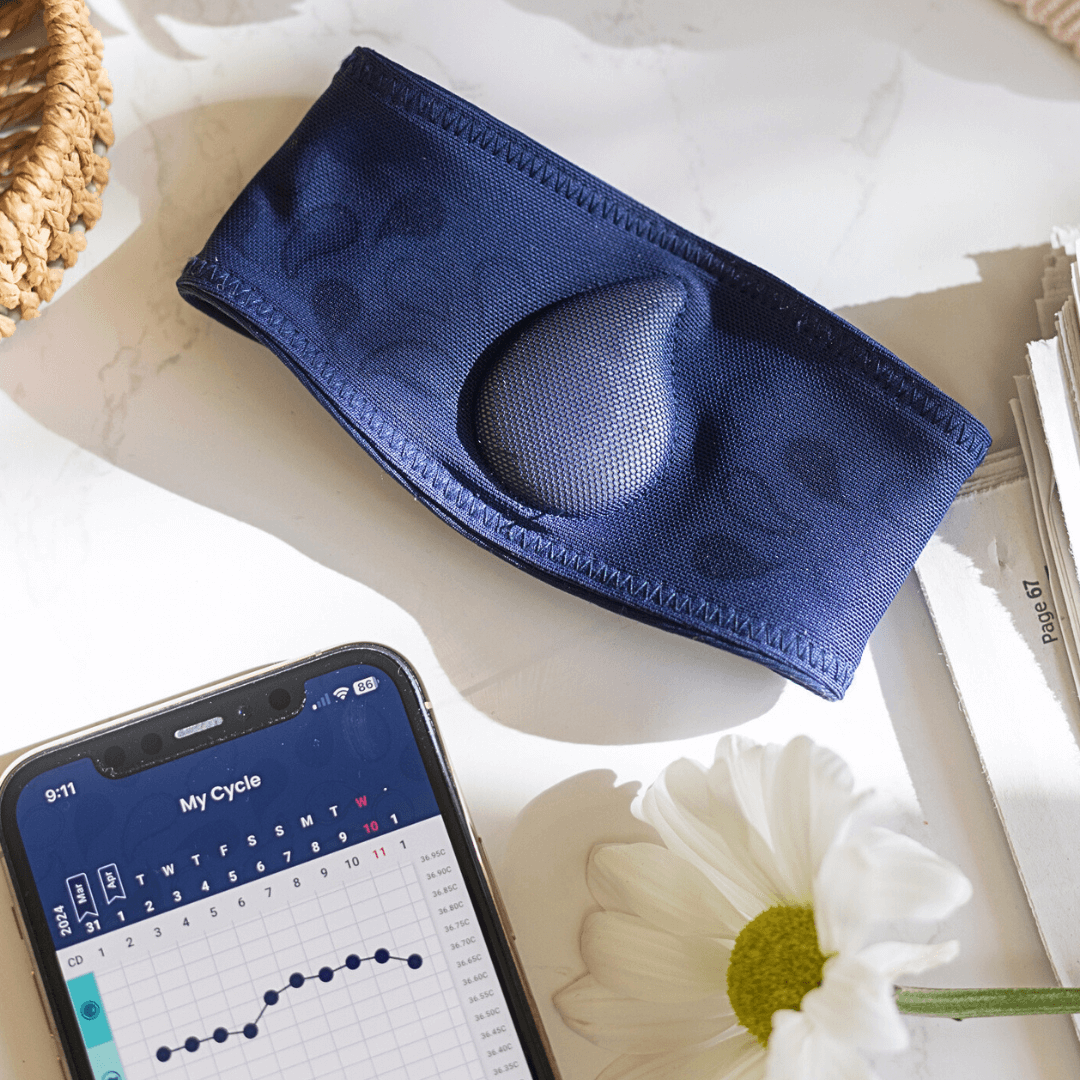
Trusted by experts
FROM TEMPDROP TO TINY TOES: HOW KATIE UNLOCKED HER FERTILITY MYSTERY
“Katie, your cycles look fine, nothing to worry about.”
That’s what she kept hearing. And on paper, it made sense. Her cycles were mostly regular. Ovulation usually happened at a normal time. GP tests didn’t show anything unusual.
But Katie knew something was off. She’d started to notice the occasional late ovulation and a few irregular cycles creeping in. Plus, tracking her basal body temperature with an oral thermometer was stressful, her shift work made it nearly impossible to take a reading at the same time every morning and get accurate feedback.
When she came to see me, I suggested trying Tempdrop. It would take the pressure off her routine while still giving us accurate, consistent data to work with. Katie ordered one straight away and started tracking.
Within just one month, the mystery started to unravel. We discovered she had a short luteal phase, something that was invisible on standard GP checks and easy to miss when you only look at cycle length.
With that knowledge, she was able to get the medication she needed. Fast forward, and Katie is now holding her beautiful baby girl, all because she became her own fertility detective and we worked together to uncover what was really going on.
Sometimes, the answers aren’t in the “average” cycle data. They’re in the details you uncover when you track consistently, and with the right tools.
Client story provided by Kate (The Cheshire Acupuncturist).
The Journal
BBT Wearables vs Thermometers: Accuracy, Benefits & the Symptothermal Method
Learn how to track your basal body temperature (BBT) to understand ovulation, monitor fertility patterns, and gain insights into your menstrual cycle. This guide covers tools, charting tips, and how combining BBT with methods like the Symptothermal Method can improve accuracy and support reproductive health.
Learn moreLearn Everything About BBT Basal Body Temperature Tracking
Learn how to track your basal body temperature (BBT) to understand ovulation, monitor fertility patterns, and gain insights into your menstrual cycle. This guide covers tools, charting tips, and how combining BBT with methods like the Symptothermal Method can improve accuracy and support reproductive health.
Learn more5 Tips for Coping with Infertility During the Holidays
Struggling with infertility? Discover 5 practical strategies to manage emotions, prioritise self-care, lean on support, and protect your wellbeing, helping you find peace and resilience during challenging times.
Learn more




















